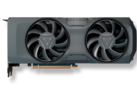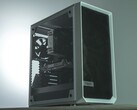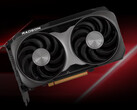FSR 4 mod brings better image quality over FSR 3 on RDNA 2’s RX 6800 XT with 114 FPS at 1440p Ultra in Cyberpunk 2077, but there’s a catch

While FSR 4 officially runs on the Radeon RX 9000 series, unofficial mods have made it possible for the latest FSR 4 to run on older RX 7000 and even RX 6000 series GPUs, breathing new life into older Radeon cards and essentially offering a free performance boost.
However, that’s not the entire story. FSR 3 already works on RX 6000 series cards, which raises the question: what is the benefit of running FSR 4 on these GPUs? Will their performance improve, or could it potentially decline?
Early tests suggest the answer is a bit of both. In their latest video, YouTuber Daniel Owen showed that on titles like Cyberpunk 2077, FSR 4 running on a Radeon RX 6800 XT produces cleaner visuals than FSR 3, particularly with foliage, holograms, and other fine details that usually break up under temporal upscaling.
The trade-off is that the performance uplift isn’t always as strong. For example, in performance mode at 1440p, FSR 3 pushed frame rates to around 122 FPS compared to native’s 81 FPS, while FSR 4 hit 114 FPS, slightly lower, but with image quality much closer to native.
In other words, FSR 3’s performance mode delivers the bigger boost, but FSR 4 narrows the gap with visuals that look more stable, even if it costs a few frames per second.
The catch is that getting FSR 4 to run on these GPUs isn’t as simple as installing the latest drivers. Owen explains that driver version 23.9.1 allows the leaked INT8 implementation of FSR 4 to function, while newer drivers break compatibility.
Modifying current drivers is possible, but comes with risks like anti-cheat conflicts and the loss of newer game-specific optimisations. For most players, downgrading remains the safer, if imperfect, approach.
According to Daniel, FSR 4 on an RX 6000 GPU can provide improved visual quality compared to FSR 3, with only a minor performance trade-off. This version, based on a leaked INT8 implementation, is not the polished FP8 release available on RDNA 4, and issues such as “sparkling” highlights can still appear. Even so, in many games it demonstrated more stable image quality than FSR 3. You can watch the full video linked below to see the visual differences between FSR 4 and FSR 3 in action.

















